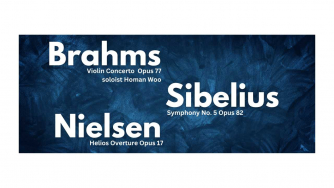Details
Blackburn Cathedral
Cathedral Close
Blackburn
Lancashire
BB1 5AA
England
Programme
Carl Nielsen – Helios Overture, Op.17
Johannes Brahms – Violin Concerto in D major, Op.77
Jean Sibelius – Symphony no.5 in E flat major, Op.82
Performers
Richard Howarth – Conductor
Homan Woo – violin
Blackburn Symphony Orchestra
Programme Note
The great characteristic of Nielsen’s music is its energy and life-affirming quality, especially apparent this overture.
Brahms intended Opus 77 to be a truly symphonic concerto; that is, a concerto that fully integrates the orchestra, rather than a showy piece designed to display the soloist’s virtuosity, in which the orchestra is relegated to mere accompaniment. Even without conventional solo pyrotechnics, Brahms’ Violin Concerto, written for Joachim’s prodigious technique, presents formidable challenges to any soloist.
Despite impressive international success as a composer, Sibelius was tormented by self-doubt and bringing the Fifth Symphony from sketches to completion took him three years of hard work, including two major revisions. Sibelius originally conceived the first movement as two separate movements: a Molto moderato followed by an accelerating scherzo. But later he had the inspired idea of having the scherzo emerge from the first movement in a seamless transition, so that the Molto moderato changes gradually like a river (Sibelius compared this symphony to a great river in his diaries), from a steady, majestic current to white-water rapids. Personal experiences from the time also found reflection in the music. “Today at ten to eleven I saw sixteen swans,” he wrote in his diary in 1915. “One of my greatest experiences! Lord God, what beauty! They circled over me for a long time. Disappeared into the solar haze like a gleaming silver ribbon.”
The noble horn theme in the finale he called his “Swan Hymn”, after this electrifying vision

 Your events at Classical Events
Your events at Classical Events

